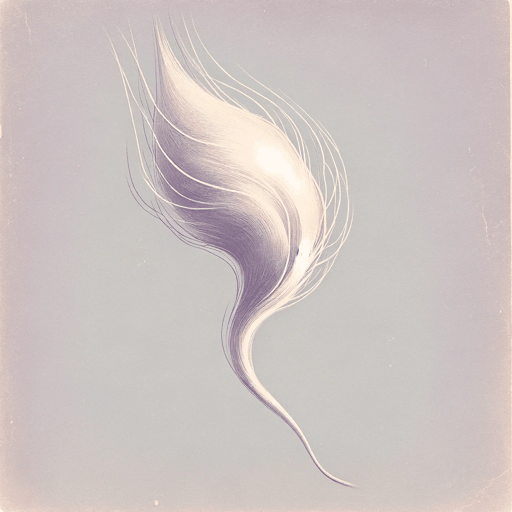20 pages • 40 minutes read
Gwendolyn BrooksThe Ballad of Rudolph Reed
Fiction | Poem | Adult | Published in 1963A modern alternative to SparkNotes and CliffsNotes, SuperSummary offers high-quality Study Guides with detailed chapter summaries and analysis of major themes, characters, and more.
Summary and Study Guide
Overview
Gwendolyn Brooks (1917-2000) is an award-winning Black poet whose work over seven decades shows the evolving influence of Black liberation struggles on Black artists. “The Ballad of Rudolph Reed,” originally published in 1960 in Brooks’s The Bean-Eaters, is a narrative poem in which Rudolph Reed, a Black man who moves his family to an all-white neighborhood, dies defending his family from racists. “The Ballad of Rudolph Reed” reflects Brooks’s increasing focus on matters of racial justice and civil rights during the 1960s, when many Black artists re-assessed their role in Black politics and culture. Using ballad form—a narrative genre that relies on four-line stanzas, regular meter, and rhyme—Brooks shows the heroic, sometimes futile efforts of Black people to live out the American Dream.
Content Warning: This study guide references racism and includes discussion of racist language and violence.
Poet Biography
Gwendolyn Brooks was born in Topeka, Kansas, to a working-class family that moved to Chicago in one of the first 20th-century waves of the Great Migration, the mass movement of Black Americans to the cities in the Northeast and Midwest. Brooks showed promise as a poet early on. With the support of her family, she published her first poem at 13 and regularly contributed to Black periodicals of Chicago. Brooks graduated with an associate’s degree in literature from a junior college, married at the end of the 1930s, and worked in publicity for the National Association for the Advancement of Colored People (“Gwendolyn Brooks.” Poetry Foundation).
Chicago was by then a thriving center of Black culture and arts, affording Brooks opportunities to work on her craft through workshops and encounters with more established poets. In 1945, Brooks published A Street in Bronzeville, a collection that focuses on Black residents living in the Bronzeville district of Chicago. Her fresh, straightforward language and her attention to the lived experience of working-class Black people contending with racism made her a major poet of the 1940s. Brooks expanded on the themes of racism and class inequality with Annie Allen (1949), a collection that is more attentive to the status of working-class Black women. Brooks won the Pulitzer Prize for Annie Allen in 1950, making her the first Black American to gain this accolade. In 1953, Brook published Maud Martha, a novel in which the protagonist struggles with colorism and racism as she makes her way in the world.
By the 1960s, Black culture and art shifted, and Brooks’s focus on the lives of working-class Black people aligned well with the newly dominant modes of representing Black culture; her use of more traditional forms did not. She attended the 1967 Black Writers Conference at Fisk University, a seminal event that helped solidify the aims of the Black Arts Movement; Brooks realized her reliance on traditional forms put her out of step with the zeitgeist. In 1968, Brooks published In the Mecca. Using free verse and creating a strong sense of place and character, Brooks represents the lives of residents of the Mecca, a historic tenement in Chicago where neglect by the city of Chicago and crime within the Black community create an inescapable sense of despair for the residents.
Brooks continued producing writing about Black people and for Black audiences, but she also began “conducting poetry workshops for gang members and inner-city black youth and became associated with more militant political groups” (“Gwendolyn Brooks.” American Passages: A Literary Survey. Annenberg Foundation. 2003). She also engaged in more experimentation in form. In her writing from the 1960s on, Brooks celebrated Black ancestors and more frequently incorporated Black music and vernacular (ordinary) language into her writing. She also engaged in more overt denunciation of racist and colonialist politics and explored the connection between Black American culture and African cultures.
By the time of her death in 2000 in Chicago, Brooks had taught generations of poets at university posts and workshops in impoverished neighborhoods, won most of the major awards for poetry, and published over 17 volumes of poetry and prose that shaped Black American and American poetry.
Poem Text
Brooks, Gwendolyn. “The Ballad of Rudolph Reed.” 1960. Poetry Foundation.
Summary
Rudolph Reed is an uncompromising Black man with a wife and three children. His greatest desire in life is to have a strong, well-built house for his family instead of the small, vermin-plagued, dark, and shabby housing his family now has. He is unconcerned with where the house will be; he will recognize the house that is just right when he sees it. He promises himself he will do whatever it takes to secure it.
The house he finds is in a racially segregated, white-only neighborhood. Reed is brave and tough, so he puts in the application for the house despite possible opposition from people who want to keep the neighborhood white. The agent is shocked and amused by Reed’s decision, but he feels a grudging respect for the man. Reed sees no humor in his choice and moves his wife and three children into the neighborhood, where the family’s skin color makes them stand out.
On the first two nights, people break the windows by throwing rocks at the house. Reed takes it all in stoically. On the third night, a rock strikes his little girl Mabel in her eye, causing her to bleed. This is too much for Reed. He leaves the house with a knife and gun to find the people responsible for hurting his child. He is so angry that he loses all reason during his search for the perpetrators. He attacks four white men before a crowd of white men kill him. His neighbors surround his body, refer to him using a racial slur, and kick his body. Mabel cries and blames herself for her father’s death, but Mabel’s hard-eyed mother grimly changes the gauze and says nothing.
Related Titles
By Gwendolyn Brooks

A Bronzeville Mother Loiters in Mississippi. Meanwhile, a Mississippi Mother Burns Bacon
Gwendolyn Brooks

A Sunset of the City
Gwendolyn Brooks

Boy Breaking Glass
Gwendolyn Brooks

Cynthia in the Snow
Gwendolyn Brooks

Maud Martha
Gwendolyn Brooks

my dreams, my works, must wait till after hell
Gwendolyn Brooks

Speech to the Young: Speech to the Progress-Toward (Among them Nora and Henry III)
Gwendolyn Brooks

The birth in a narrow room
Gwendolyn Brooks

The Blackstone Rangers
Gwendolyn Brooks

The Chicago Defender Sends a Man to Little Rock
Gwendolyn Brooks

The Crazy Woman
Gwendolyn Brooks

The Lovers of the Poor
Gwendolyn Brooks

The Mother
Gwendolyn Brooks

the rites for Cousin Vit
Gwendolyn Brooks

To Be in Love
Gwendolyn Brooks

To The Diaspora
Gwendolyn Brooks

Ulysses
Gwendolyn Brooks

We Real Cool
Gwendolyn Brooks

